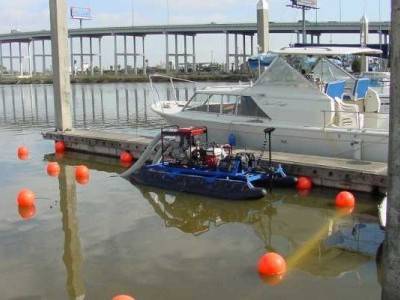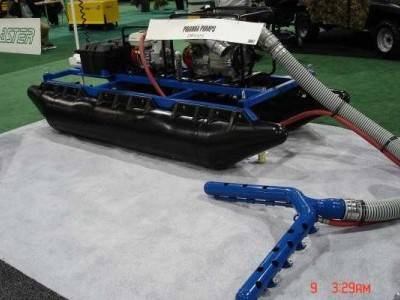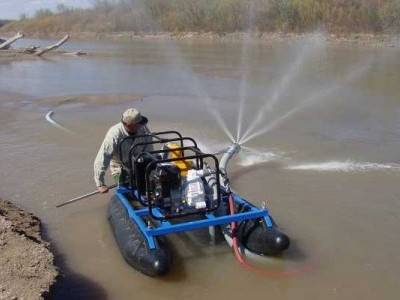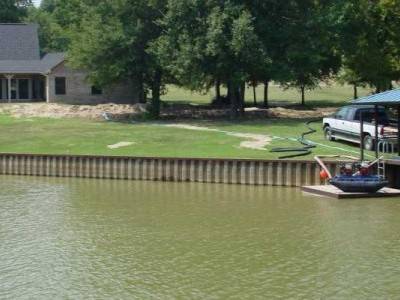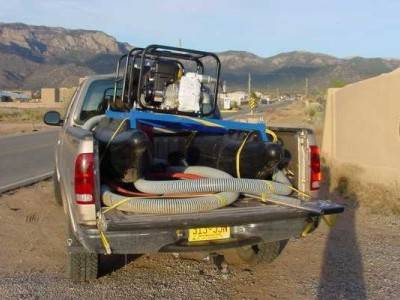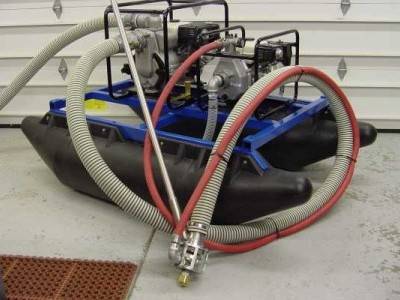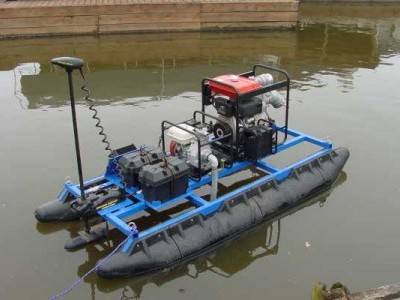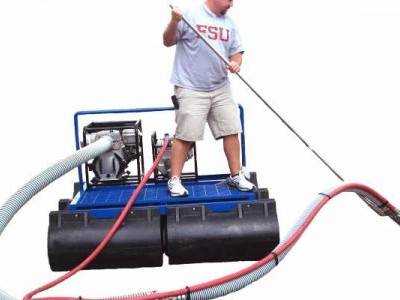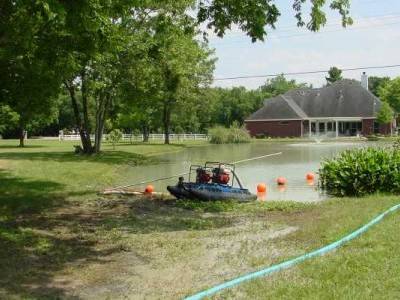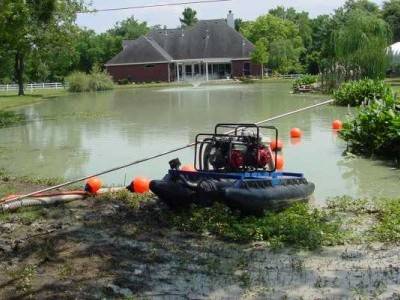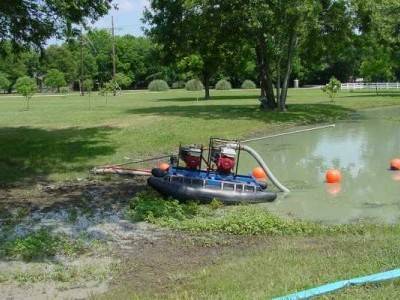This depends upon the vertical elevation differential, and the type of sediment.
The vertical elevation differential, otherwise known as “static head”, is the elevation difference from the surface of the water body to the point of discharge. There are two important factors to point out here. First, it does not matter how far the sediment is below the water surface. Static head begins at the water surface. Secondly, it makes no difference if your discharge is going up and over a hill. The static head begins at the water surface, and ends at the open end of the discharge hose. For example: if your are dredging from a lake, and your discharge hose runs up over a 30 foot high dam, then down 20 vertical feet the other side of the dam, then your static head is 10 feet.
The type of sediment will have some effect on the production rate and on the distance that you are able to pump it. Most of our customers are dealing with either black stinky fluffy mud, or sand. The Mini dredge works well with both types of material.
In order to transport a slurry through a pipe or hose, it must maintain a minimum velocity to prevent the sediment from settling in the hose, eventually forming a restriction or plug. The term for this is “minimum critical carrying velocity”. The text book minimum velocity for mud is 3 to 5 feet per second. We prefer to utilize a more conservative value of 7 feet per second. The text book minimum velocity for sand is 5 to 7 feet per second. Again, we prefer to utilize a more conservative value of 9 feet per second.
Velocity is defined by the flow in gallons per minute, and the discharge hose diameter. 154 gallons per minute through a 3 inch hose translates to 7 feet per second, the minimum velocity for transporting mud. 198 gallons per minute represents 9 feet per second, the minimum velocity for sand. As you increase either the static head or the discharge hose length, you are simultaneously decreasing the flow and velocity.
To utilize the table below, estimate the total length of discharge hose. 15 feet of static head is roughly equivalent to 100 feet of hose. Add 100 feet for every 15 feet of static head. For example: you have 200 feet of actual discharge hose, and 30 feet of static head, then, utilize the 400 foot discharge hose value in the left hand column. Your flow will be 200 gpm, velocity 9.99 feet per second (plenty for both sand and mud), and your dredging capabilities will be 19 cubic yards per hour for sand, 22 yards for mud. If you call us with your actual parameters, we will plot a precise computer generated graph of your dredge performance. Following is general performance data pertaining to our dredge model PS135E.
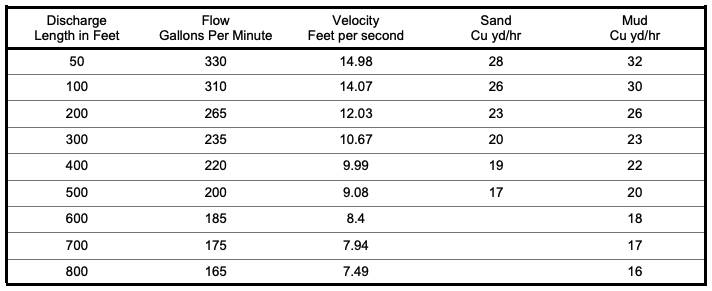
 PIRANHA
PIRANHA
